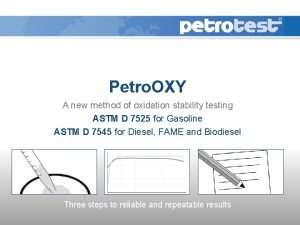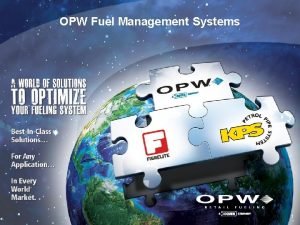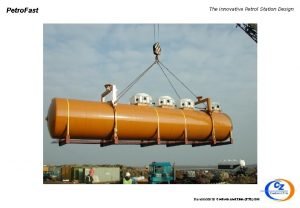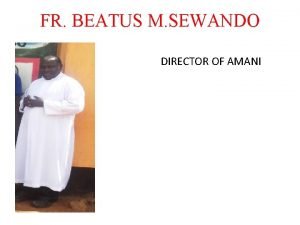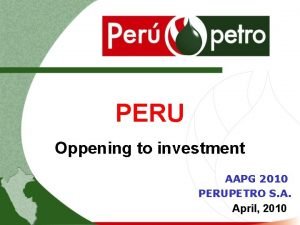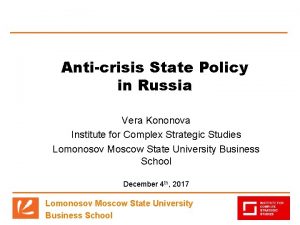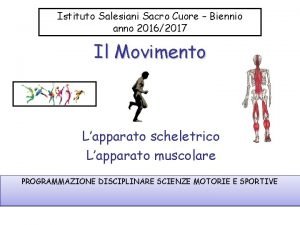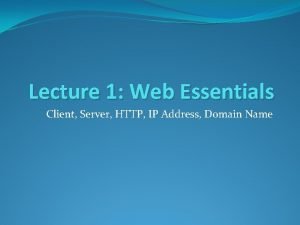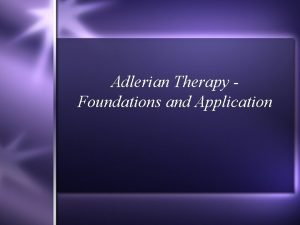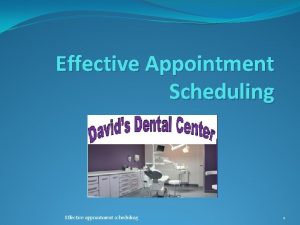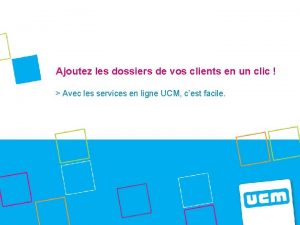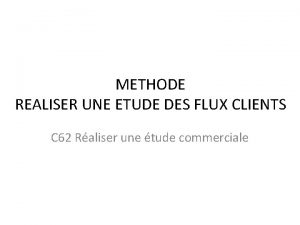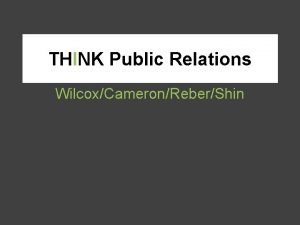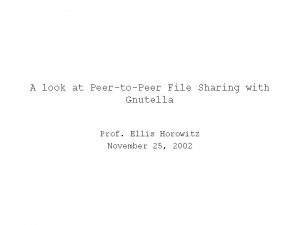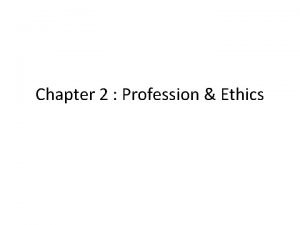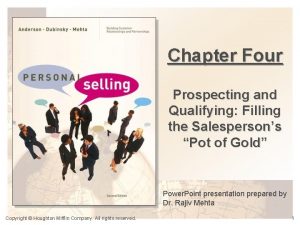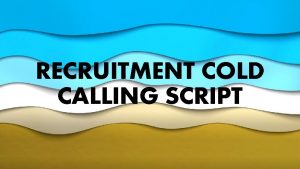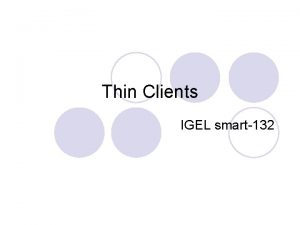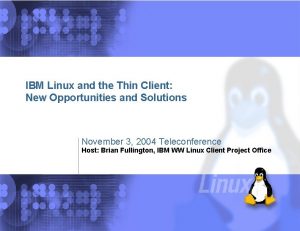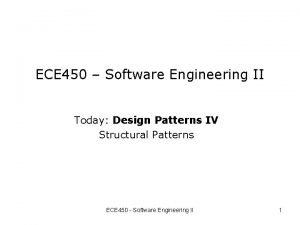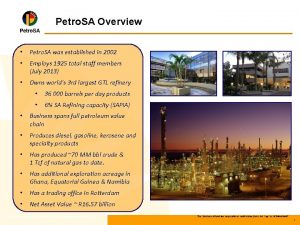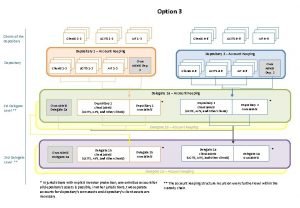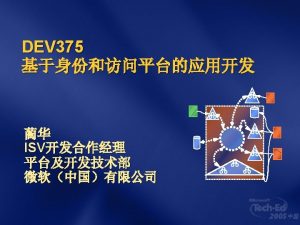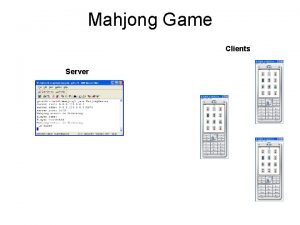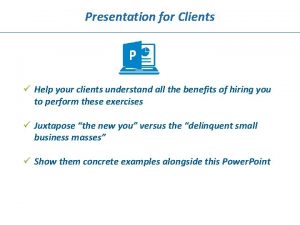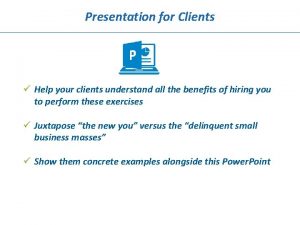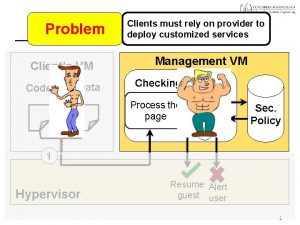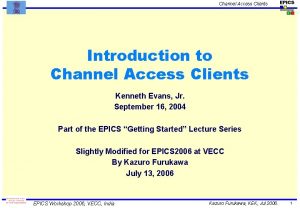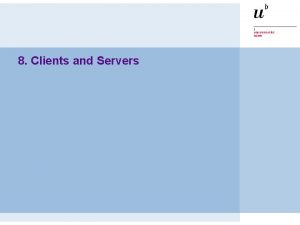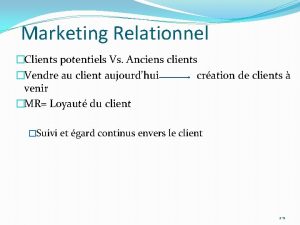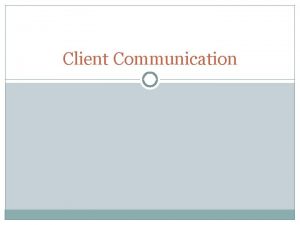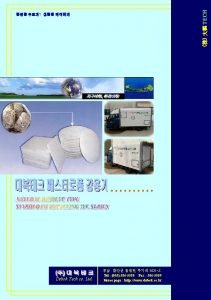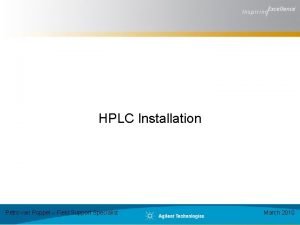1 Petro Tech Clients 2 The Petro Tech








































































- Slides: 72

1

Petro. Tech Clients 2

The Petro. Tech System Ø Filtration Ø Vacuum distillation Ø Degasification 3

The Petro. Tech System PURIFIES THE OIL TO ITS ORIGINAL STATE OR PURER 4

The Petro. Tech System DOES NOT DEPLETE ADDITIVES OR CHANGE OIL PROPERTIES 5

APPLICATIONS 6

MINING 7

Mining Applications Ø Haul Trucks Ø SXEW Hydraulics Ø Crusher Hydraulics Ø Drill Hydraulics Ø Transformers Ø Turbines 8


AUTOMOTIVE 10

Automotive Applications Ø Machine Tool Hydraulics Ø Robotic Assembly Hydraulics Ø Gun Drilling Oil Systems Ø Gear Oil Systems 11

Robotic Assembly Hydraulics


STEEL 14

Steel Mill Applications Ø Hydraulic Conveyor Systems Ø Gear Oil Systems Ø Rolling Mill Systems Ø Transformer Oils 15

Rolling Mill

REFINERIES 17

Refinery Applications Ø Steam Turbines Ø Gas Turbines Ø Transformers 18


PULP & PAPER 20

Pulp & Paper Applications 21

POWER UTILITIES 22

Power Utility Applications Ø Steam Turbines Ø Gas Turbines Ø Transformers 23


PRIMARY METALS 25

MILITARY 26


Oil Never Wears Out ! 28

THE THREE MAJOR OIL CONTAMINANTS Ø Water Ø Particulates Ø Gas 29

WATER States That Water Exists in Oil ØDissolved Water - typically Ø 100 ppm @100°F Ø 600 ppm @140°F ØEmulsified –. 5% to 4% ØFree Water 30

Sources of Water Contamination 8 Through system vents 8 From leaks in coolers and heat exchangers 8 Precipitation due to a fall in temperature 8 Introduction of contaminated top-up fluid 8 Rain in external reservoirs 8 Rain leaking into incorrectly stowed drums 31

Effects of Water Contamination 8 Corrosion of component surfaces 8 Degradation of fluid performance 8 Precipitation of additives 8 Oxidation of hydrocarbon fluids 8 Deterioration of fluid lubricating properties 8 Icing at low temperatures 8 Promotion of microbial growth 32

Solubility of Water in Oil saturation point is affected by temperature: 200 Water Concentration 150 (ppm) 100 Free Water Dissolved Water 50 75 125 175 Oil Temperature (°F) Reference: EPRI CS-4555 Turbine Oil 33

Effect of Water & Particulate on Oxidation Acid Fluid Life Neut. No. (Hours) Particles Water None No 0. 17 3500+ None Yes 0. 90 3500+ Iron No 0. 65 3500+ Iron Yes 8. 10 400 Copper No 0. 89 3000 Copper Yes 11. 20 100 34

Contamination and Oil Breakdown 12. 0 Acid Number 10. 0 Copper & Water Iron & Water only 1. 0 Copper 0. 8 0. 6 Iron 0. 4 0. 2 Clean and Dry 0. 0 1000 2000 Hours 3000 35

ADVANTAGES OF REMOVING WATER FROM OIL Ø Reduces oxidation, hydrolysis, and subsequent breakdown of the oil. Ø Acid buildup is eliminated or reduced substantially. Ø Prevents corrosion of components. Ø Reduces antifriction bearing wear. 36

ADVANTAGES OF REMOVING WATER FROM OIL Ø Reduces pump, valve, and bearing wear. Ø Reduces rate of filter plugging. Ø Prevents reduction of oil film strength by dilution with water. Ø Prevents substantial viscosity changes of the oil. 37

Viscosity Change due to water

How Water Concentrations Vary ppm = 5 10 20 25 Hydraulic 50 Dry Gear Very Dry Transformer Very Dry 150 300 Wet Very Dry Turbine 100 Dry Wet Wet Petro. Tech Standard Purification Level Petro. Tech Transformer Purification Level 39

Bearing Life BEARING LIFE LOSS DUE TO WATER* Amount of Fatigue Life Water in Oil Ratio** 25 ppm 2. 59 100 ppm 1. 00 400 ppm 0. 52 *Data supplied by Timken Company and refers to tapped roller bearings **Fatigue Life Ratio is determined by testing bearings until half failed A ratio of 1. 00 = the test point at which the 50% failure rate is achieved 40

41

Water Concentration’s Affect On Life Extension Factor ppm 2 3 4 5 6 7 8 9 10 50, 000 12, 500 6, 500 4, 500 3, 125 2, 500 2, 000 15000 1, 000 782 25, 000 6, 250 3, 250 2, 250 1, 563 1, 250 1, 000 750 500 391 10, 000 2, 500 1, 300 900 625 500 400 300 200 156 5, 000 1, 250 650 450 313 250 200 150 100 78 2, 500 625 325 225 156 125 100 75 50 39 1, 000 250 130 90 63 50 40 30 20 16 500 125 65 45 31 25 20 15 10 8 250 63 33 23 16 13 10 8 5 4 100 25 13 9 6 5 4 3 2 2 42

PARTICULATE Microscopic Wrecking Crew Ø Greater Damage Associated With Small Particles Ø Multiplication Effect Ø “There is no single property of lubricating oil that challenges the reliability of machinery more than suspended particles. ” – Jim Fitch of www. Oil. Analysis. com 43

ADVANTAGES OF REMOVING PARTICULATE FROM OIL Ø Reduces oxidation of oil since silt particles have been found to act as catalysts in accelerating the oxidation process. Ø Substantially increases life of hydraulic and lubricating system components. 44


Fluid Cleanliness Required for Typical Hydraulic Components ISO Code Servo Control Valves 16/14/11 Proportional Valves 17/15/12 Vane & Piston Pumps/Motors 18/16/13 Directional & Pressure Control Valves 18/16/13 Gear Pumps/Motors 19/17/14 Flow Control Valves, Cylinders 20/18/15 New Unused Fluid (Unfiltered) 20/18/15 46

How ISO Works 47

ISO Level Affect And Life Extension Factor ISO 2 3 4 5 6 7 8 9 10 26/23 22/19 20/17 18/15 17/14 16/13 15/12 14/11 25/22 21/18 19/16 17/14 16/13 15/12 14/11 13/10 24/21 20/17 18/15 17/14 16/13 15/12 14/11 13/10 12/9 23/20 19/16 17/14 15/12 14/11 13/10 11/8 22/19 18/15 16/13 14/11 13/10 12/9 11/8 21/18 17/14 15/12 13/10 12/9 11/8 20/17 16/13 14/11 13/10 11/8 19/16 15/12 13/10 11/8 18/15 14/11 12/9 17/14 13/10 11/8 16/13 12/9 15/12 11/8 14/11 11/8 13/10 11/8 12/9 11/8 48

Typical Particle Analysis Results Petro. Tech Reclaimed Oil is Cleaner than New Oil. Dirty Oil New Oil RECLAIMED OIL Size # / ml ( m) >5 31, 584 Size # / ml ( m) >5 16, 324 Size # / ml ( m) >5 65 >15 11, 314 >15 3, 779 >15 7 >25 7, 369 >25 1, 147 >25 3 >50 2, 772 >50 116 >50 1 >100 116 >100 18 >100 0 49

ISO Ranges Vary by Oil Type ISO= 12/9 Hydraulic 14/11 Very clean Gear Turbine Transformer 16/13 18/15 20/17 22/19 24/21 26/23 clean dirty Very clean Clean clean dirty Petro. Tech Standard Cleaning Level 50

Typical Cleanliness Levels New Oil From Barrel 22/20/18 New System w/ Built-in Contaminants 23/22/20 51

Typical Cleanliness Levels System With Typical Hydraulic Filtration 20/18/16 Petro. Tech System with b 3 >200 Clearance Protection Filtration 14/13/11 52

ADVANTAGES OF REMOVING GAS FROM OIL Ø Reduces oxidation and deterioration of oil. Ø Prevents foaming of oils that cause sponge —like responses. Ø Prevents formation of varnish and sludge through thermal cracking of oil by nitrogen fixing at high pressure. Ø Reduces possibility of cavitation and pump wear. 53

Gas Problems Ø Increases - Spongy, spring-like compression causing rejects Ø Causes Additive Depletion Ø Reduces Heat Transfer Ø Causes Nitration – Resulting in Oxidation and Varnish Formation Ø Increases TAN Ø Increases Oil Level - Artificially 54

Adiabatic Compression of Entrained Gas – NITRATION 55



Types of Gases in Lubrication Fluids The Three States that Gas Exists in Oil Ø Dissolved (8% – 10% gas by volume) Ø Entrained (Bubbles) Ø Foam 58

How Gas Concentrations Vary % =0 1 2 3 4 5 6 Hydraulic No Gas Gear No Gas Turbine Transformer No Gas Petro. Tech Standard Cleaning Level 7 Gas 59




Schematic

MORS-300

How Fast Would You like to Process? MORS 300 MORS 700 MORS 1, 800 65

66

Fully Mobile 67

Cost Factors Ø Loss Ø of productivity costs due to: Downtime for equipment maintenance Ø Component replacement costs due to: High particulate content Ø Water Ø Gas Ø Ø Cost of new oil Ø Disposal cost of used oil 68

Next. Step™ We think of our service as the logical “next step” for any company who is striving towards a world class proactive maintenance program Typical “Next Step” Dialysis Results: Ø Reduces Particulate Levels To ISO 15/13/10 Ø Removes Water To 30 ppm Ø Reduces Gas Content To 0. 7% Low Temperature Vacuum Distillation and Degasification Process 69

While the Machinery is Running Ø Flushes out Contaminants Ø Purifies oil in every Nook and Cranny, Crack and Crevasse Ø No Downtime Ø Less possibility of Mistakes – Wrong oil – Source Contamination 70

Why use Petro. Tech Ø Ø Ø Ø Reduce Production Costs Reduce Lubrication Acquisition Costs Improve Product Quality Maximize Equipment Uptime Minimize Maintenance And Repair Costs Improve Equipment Reliability Reduce Environmental Impact Reduce Environmental Costs 71

Petro. Tech Contact Information R. Haig Hachadoorian President Petro. Tech, Inc. PO Box 220162 Great Neck, NY 11022 516 -454 -7600 – Office 516 -829 -5791 – Fax 516 -850 -9000 – Cell haig@Petro. Tech. us Corporate Headquarters Petro. Tech, Inc. PO Box 220162 Great Neck, NY 11022 516 -454 -7600 – Office 516 -829 -5791 – Fax www. Petro. Tech. us 72
 Petro-tech heat technology inc
Petro-tech heat technology inc Petro
Petro Bruce a research chemist for a major petro
Bruce a research chemist for a major petro Petro vend k800
Petro vend k800 Petrol pump design plan
Petrol pump design plan Maria petro teacher
Maria petro teacher Petro pariñas sac houston
Petro pariñas sac houston Petro kononova
Petro kononova Sutura petro giugulare
Sutura petro giugulare Web essentials clients servers and communication
Web essentials clients servers and communication Spitting in the clients soup
Spitting in the clients soup How to schedule appointments with clients
How to schedule appointments with clients Appipay ucm
Appipay ucm Clients needs assessment
Clients needs assessment Multicultural view of existentialism
Multicultural view of existentialism étude de flux
étude de flux Counseling multicultural clients
Counseling multicultural clients What are the golden rules of communication milady
What are the golden rules of communication milady Trauma-informed questions for clients
Trauma-informed questions for clients Todays public relations departments
Todays public relations departments Gnutella clients
Gnutella clients Asme code of ethics
Asme code of ethics Typologie des clients insatisfaits
Typologie des clients insatisfaits Prospecting and qualifying
Prospecting and qualifying Idt therapy
Idt therapy Social work assessment questions example
Social work assessment questions example Recruiter cold call script
Recruiter cold call script Thin client nachteile
Thin client nachteile Sabre helps its clients through dashboards and analytics
Sabre helps its clients through dashboards and analytics Ibm thin client
Ibm thin client Facade pattern couples a subsystem from its clients
Facade pattern couples a subsystem from its clients Scalp care shampooing and conditioning
Scalp care shampooing and conditioning Nudge for clients
Nudge for clients Déontologie
Déontologie Low tech assistive technology for communication
Low tech assistive technology for communication Lp html
Lp html Sơ đồ cơ thể người
Sơ đồ cơ thể người Bảng số nguyên tố lớn hơn 1000
Bảng số nguyên tố lớn hơn 1000 Fecboak
Fecboak đặc điểm cơ thể của người tối cổ
đặc điểm cơ thể của người tối cổ Các châu lục và đại dương trên thế giới
Các châu lục và đại dương trên thế giới Tư thế worms-breton
Tư thế worms-breton ưu thế lai là gì
ưu thế lai là gì Tư thế ngồi viết
Tư thế ngồi viết Bàn tay mà dây bẩn
Bàn tay mà dây bẩn Mật thư anh em như thể tay chân
Mật thư anh em như thể tay chân Các châu lục và đại dương trên thế giới
Các châu lục và đại dương trên thế giới Bổ thể
Bổ thể Tư thế ngồi viết
Tư thế ngồi viết Thẻ vin
Thẻ vin Thứ tự các dấu thăng giáng ở hóa biểu
Thứ tự các dấu thăng giáng ở hóa biểu Thể thơ truyền thống
Thể thơ truyền thống Chúa sống lại
Chúa sống lại Từ ngữ thể hiện lòng nhân hậu
Từ ngữ thể hiện lòng nhân hậu Hổ sinh sản vào mùa nào
Hổ sinh sản vào mùa nào Diễn thế sinh thái là
Diễn thế sinh thái là Vẽ hình chiếu vuông góc của vật thể sau
Vẽ hình chiếu vuông góc của vật thể sau Làm thế nào để 102-1=99
Làm thế nào để 102-1=99 Tỉ lệ cơ thể trẻ em
Tỉ lệ cơ thể trẻ em Lời thề hippocrates
Lời thề hippocrates đại từ thay thế
đại từ thay thế Vẽ hình chiếu đứng bằng cạnh của vật thể
Vẽ hình chiếu đứng bằng cạnh của vật thể Quá trình desamine hóa có thể tạo ra
Quá trình desamine hóa có thể tạo ra Kể tên các môn thể thao
Kể tên các môn thể thao Công thức tiính động năng
Công thức tiính động năng Thế nào là mạng điện lắp đặt kiểu nổi
Thế nào là mạng điện lắp đặt kiểu nổi Hình ảnh bộ gõ cơ thể búng tay
Hình ảnh bộ gõ cơ thể búng tay Khi nào hổ con có thể sống độc lập
Khi nào hổ con có thể sống độc lập Các loại đột biến cấu trúc nhiễm sắc thể
Các loại đột biến cấu trúc nhiễm sắc thể Thế nào là sự mỏi cơ
Thế nào là sự mỏi cơ độ dài liên kết
độ dài liên kết Voi kéo gỗ như thế nào
Voi kéo gỗ như thế nào Thiếu nhi thế giới liên hoan
Thiếu nhi thế giới liên hoan

